What does Blue Moon mean spiritually?
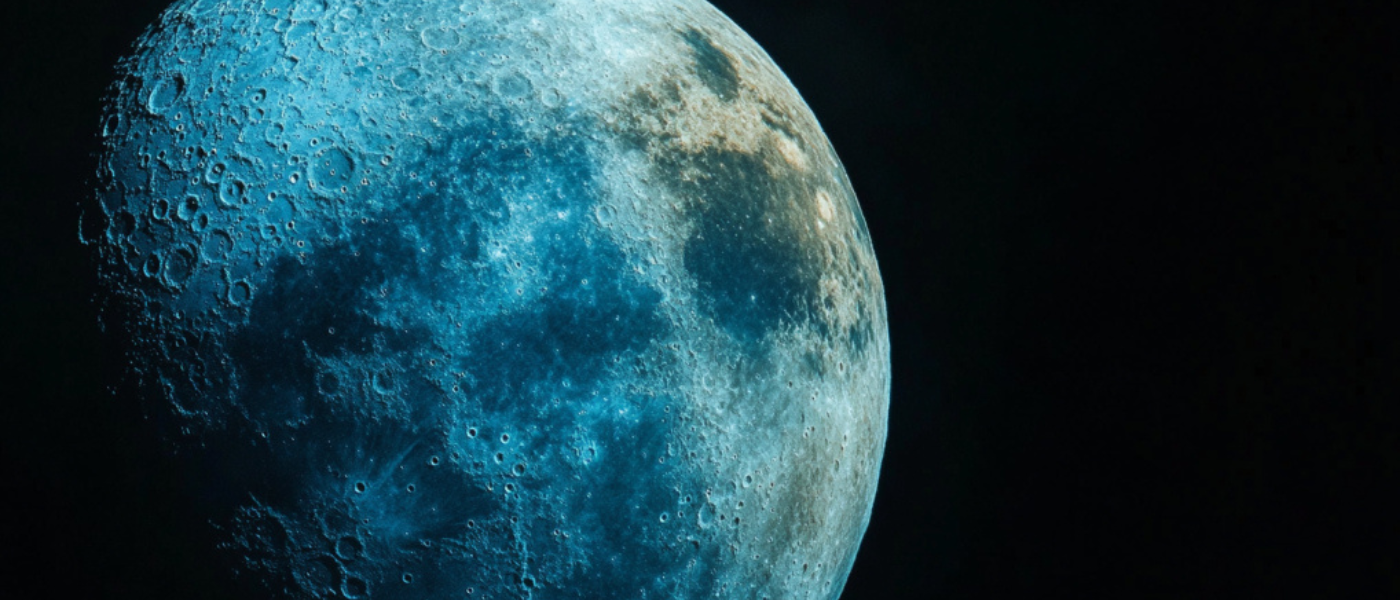
What is a blue moon?
A Blue Moon is a rare lunar event or astronomical season where two full moons occur in one calendar month. It can also be the third full moon in a season that has four full moons.
The term Blue Moon has two meanings: a monthly Blue Moon and a seasonal Blue Moon, each with its own history and calendar logic.
It’s called a blue moon because of its rarity in the lunar cycle and calendar.
What does a super blue moon mean spiritually?
A super blue moon is a rare occurrence that’s deep spiritually. Spiritually, it means a time of high energy, clarity and transformation.
The “super” part means the moon is closer to the earth and amplifies its effect on our emotions and intuition; the “blue” moon, being the second full moon in a month, is a once-in-a-lifetime opportunity for introspection and growth.
This is a time to release old patterns, set powerful intentions and open your heart to change. Many believe the super blue moon is for deep healing, self-discovery, and alignment with your higher self, so use this time for meditation, rituals, or connecting with the universe.
Also read >>> Rainbow Orbs
Key Takeaways
- A Blue Moon occurs when there are two full moons in a calendar month or the third full moon in a season with four full moons.
- Blue Moons happen approximately every 2-3 years.
- Two types of Blue Moons: Monthly (second full moon in a month) and Seasonal (third full moon in a season with four).
- The term “Blue Moon” is based on rarity, not the Moon’s color.
- Rarely, atmospheric conditions like volcanic ash can make the Moon appear blue.
- Blue Moons have astrological significance, often associated with emotional intensity, unpredictability, and spiritual growth.
- Cultural traditions link Blue Moons to celebrations, rituals, and folklore in Native American, European, and Chinese cultures.
- The phrase “once in a Blue Moon” symbolizes rarity and dates back to the 1500s.
- Blue Moons can influence tides, weather patterns, and marine ecosystems due to gravitational effects.
- Next Blue Moon dates: May 31, 2026 (monthly) and May 20, 2027 (seasonal).
- Photographing a Blue Moon requires timing, good equipment, and creative composition.
- Popular culture often uses Blue Moons as symbols of rarity and special moments.
Types of blue moons: third full moon
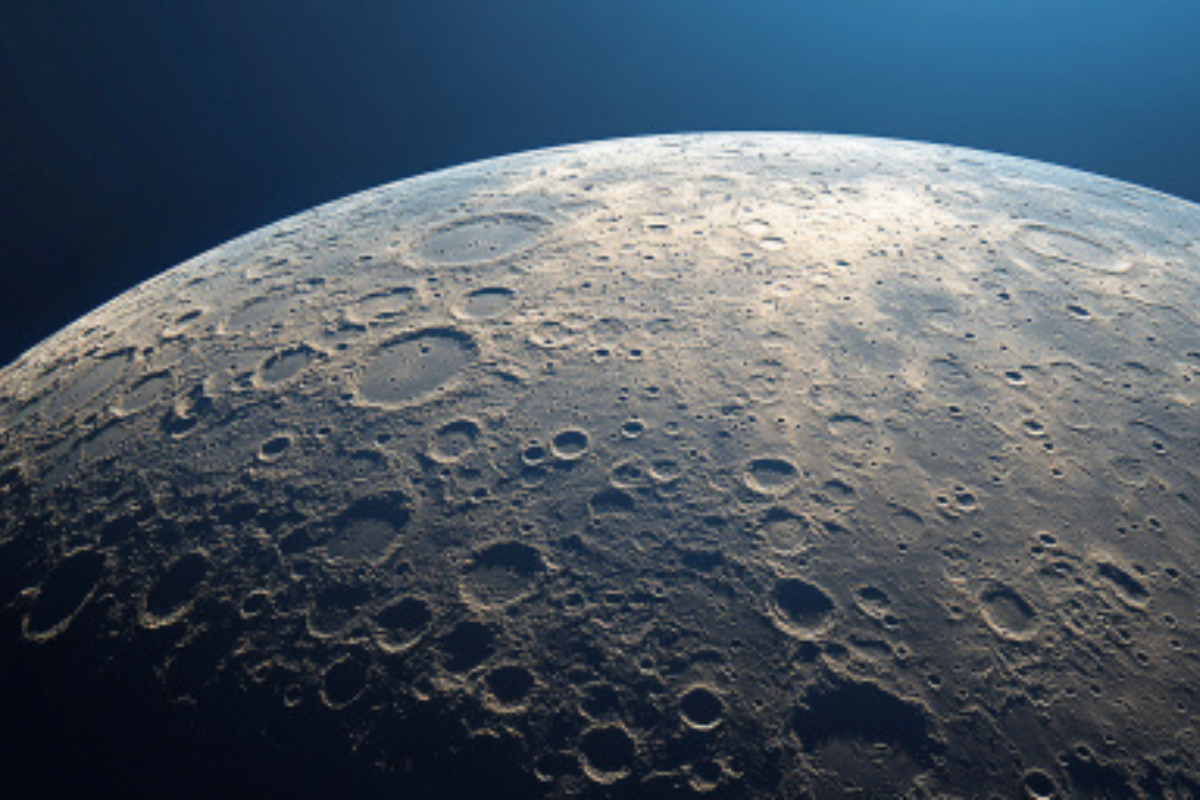
A monthly Blue Moon is the second full moon in a month with two full moons in and only one full moon in a year.
A seasonal Blue Moon is the third full moon in an astronomical season of the same calendar year or astronomical seasons with four full moons.
The definition of a Blue Moon as the second full moon in a month is a modern concept, introduced in a 1946 edition of Sky & Telescope magazine.
The term blue moon originally described the third full moon in four seasons or third moon falls a season with four full moons.
James Hugh Pruett, an amateur astronomer, misinterpreted the term in Sky & Telescope and that’s how we understand the seasonal moon names today.
Frequency and timing of blue moons: next blue moon
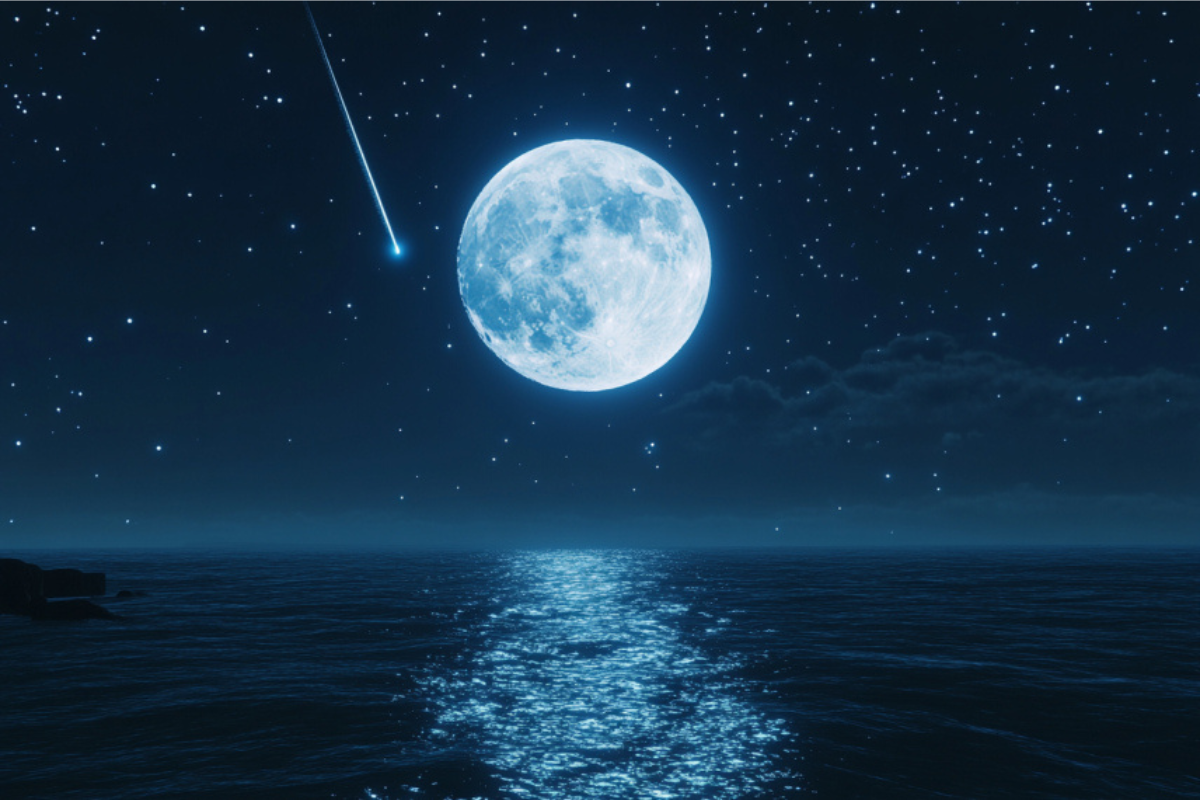
- A blue moon happens every 2-3 years. A blue moon appearing blue is extremely rare and has to do with atmospheric conditions.
- Blue moons happen because of the correlation between lunar cycles and the calendar. The mismatch between lunar months and the calendar year can result to two full moons in one month and that’s a ‘blue moon.’
- Next seasonal Blue Moon: May 20, 2027. Next monthly Blue Moon: May 31, 2026.
- Blue Moons are not as rare as the phrase “once in a blue Moon” implies.
Origins and Folklore of Blue Moons
- The origin of the phrase “once in a blue Moon” is unknown but one of the earliest recorded use is in 1528.
- The phrase has been used to describe unusual or rare events and has been mentioned in various forms of literature and media throughout the centuries.
- The term Blue Moon was popularized by amateur astronomer James Hugh Pruett in 1946 who defined it as the second full moon in a calendar month.
Seasonal blue moons happen when there are 235 full moons in 19 years but only 76 seasons so some seasons have four full moons instead of three.
Astrological Significance of Blue Moons
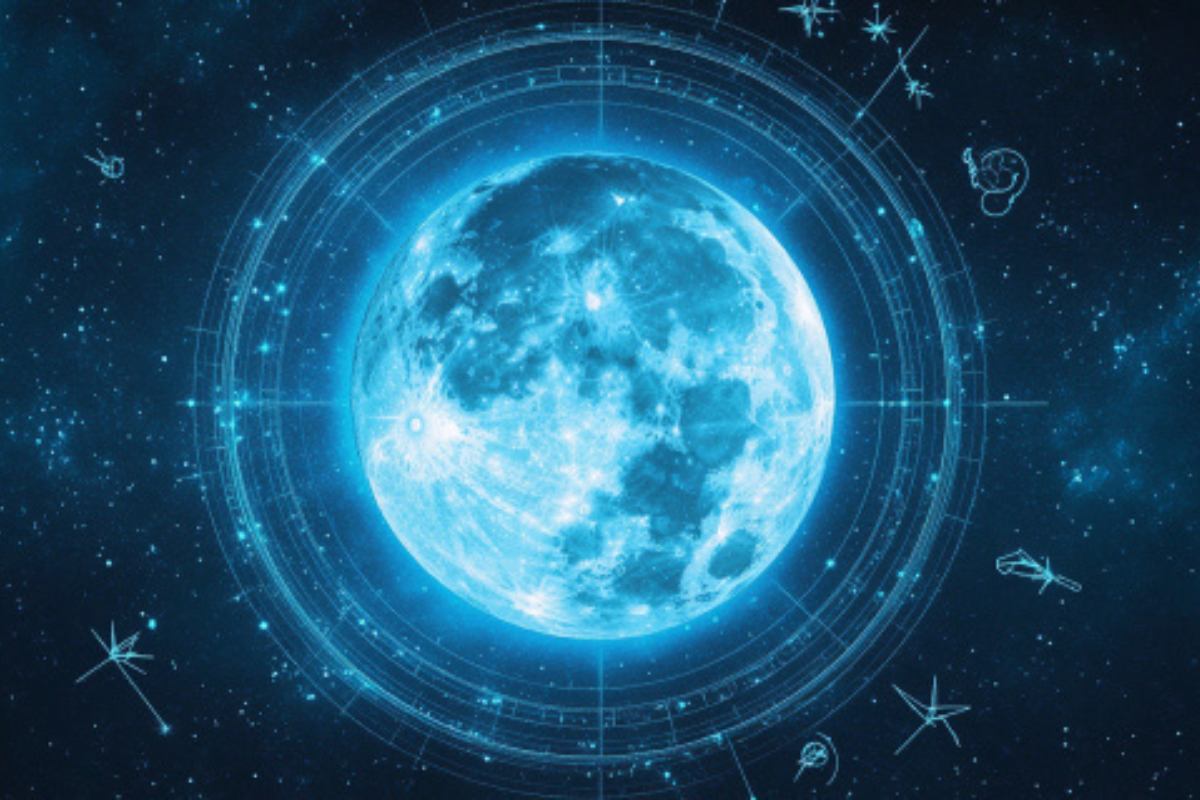
Blue Moons have been fascinating astrologers for centuries who believe these extremely rare full lunar events can affect human behavior, emotions and life events.
When a Blue Moon appears in the sky, it’s often associated with emotional intensity. The full moon phase amplifies our feelings and instincts so we get mood swings and are more sensitive.
Astrologers also link Blue Moons with unpredictability.
These celestial events are said to bring unexpected changes and surprises, shake up the status quo and sudden shifts in our lives.
This unpredictability can manifest in many ways, from unexpected opportunities to sudden endings.
In many spiritual traditions, Blue Moons are considered sacred. It’s a time for introspection, spiritual growth and connecting with the divine.
This is the perfect time for meditation, self reflection and setting intentions for personal growth.
Relationships are not spared from the Blue Moon’s influence. During these times, underlying issues and emotions will surface and necessary conversations and resolutions will happen.
Whether it’s a time of conflict or deepening of bonds, Blue Moons can bring about big changes in relationship dynamics.
Also read >>> Moon Signs
Cultural celebrations and traditions
Blue Moons have been part of various cultural celebrations and traditions throughout history. In some Native American cultures, Blue Moons are a time for spiritual ceremonies and rituals.
These events usually involve storytelling, dancing and other communal activities to honor the Moon’s special presence.
European folklore is full of Blue Moon stories, often linking them to magic, witchcraft and supernatural events.
These stories have been passed down through the generations and added to the Blue Moon’s mystique.
In Chinese culture, Blue Moons are considered good luck and prosperity. Celebrations during these times may involve family gatherings, feasts and other happy activities that emphasize unity and abundance.
Modern Blue Moon celebrations have taken on a more modern twist. People often mark these rare occasions with parties, music, art and self expression.
Whether through themed events or personal rituals, the Blue Moon still inspires creativity and connection.
How to observe a Blue Moon
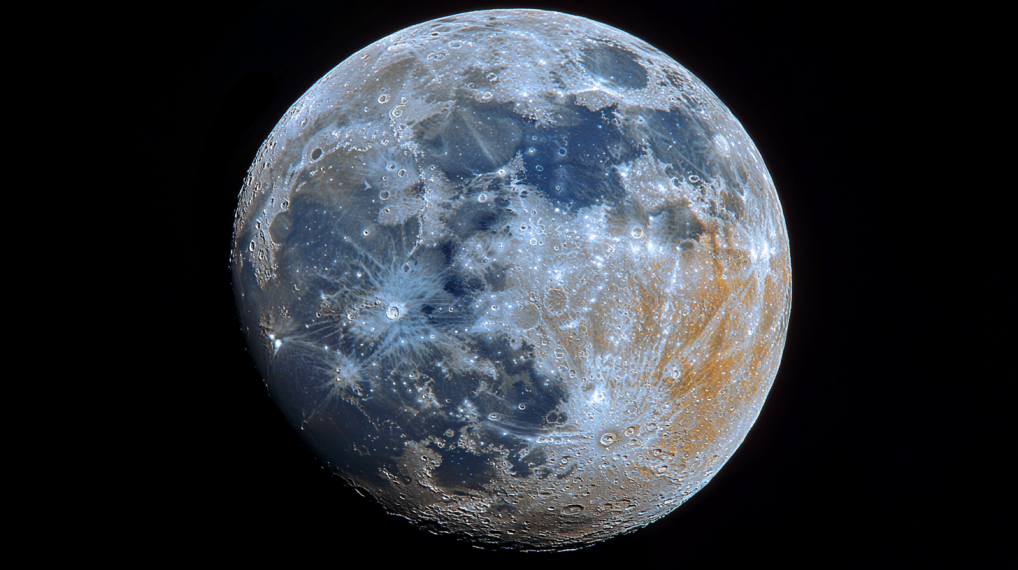
- A Blue Moon is not blue and does not refer to the color of the Moon.
- The Moon will not be more or less affected by atmospheric conditions than in any other month. A blue moon occurs every 2-3 years and a blue moon appearing blue is very rare and only happens when there are volcanic ash or smoke particles in the sky.
- The Moon can appear white, yellow, grey or orange due to atmospheric conditions but it will not appear blue.
How to photograph a Blue Moon
Photographing a Blue Moon can be a fun challenge.
Timing is key. Plan your shoot during the peak of the Blue Moon when it’s at its fullest and brightest so you can capture the Moon in all its glory.
Use the right equipment too. A camera with good low light sensor and telephoto lens will help you capture the Moon’s details.
If you don’t have a professional camera, even a smartphone with a decent camera can produce great results with the right settings.
Play with composition to add some creativity to your shots. Include foreground elements like trees, buildings or silhouettes to give your images some scale and context. Abstract patterns and reflections can also look great.
And don’t forget post processing. Editing your images can enhance the colors, contrast and details of the Moon and make your photos even more beautiful.
With a little practice and patience you can capture the Blue Moon in your photos.
Blue Moon FAQs
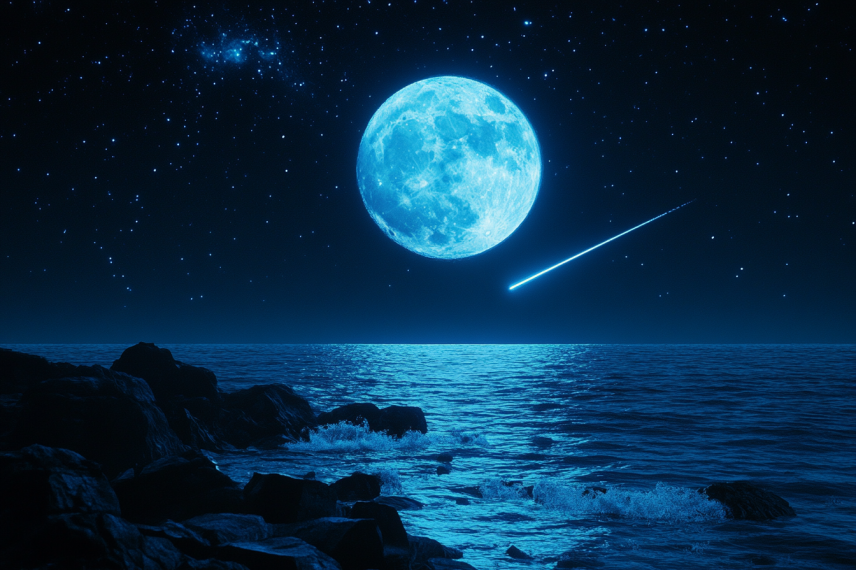
- What is a Blue Moon?
- How often do Blue Moons happen?
- What is the difference between a monthly Blue Moon and a seasonal Blue Moon?
- Can the Moon really turn blue?
- Last Blue Moon was on August 1, 2024. It was special because it showed the difference between various Blue Moons. Next Blue Moon is on May 20, 2027 and it’s a supermoon so it will highlight the difference between Blue Moons in folklore and photography.
Blue Moon science
- The modern calendar is based on astronomy, a day is based on the Earth’s rotation, a year is based on the Earth’s orbit around the Sun and a month is based on the Moon’s orbit around the Earth.
- We see 12 full moons in a year, one in each calendar month.
- But the calendar year has around 11 extra days than 12 lunar cycles so we have 2 full moons in a calendar month.
- Seasonal blue moons occur when there are 4 full moons in a season which happens every 2.7 years so they are rarer than monthly blue moons.
Tides and weather
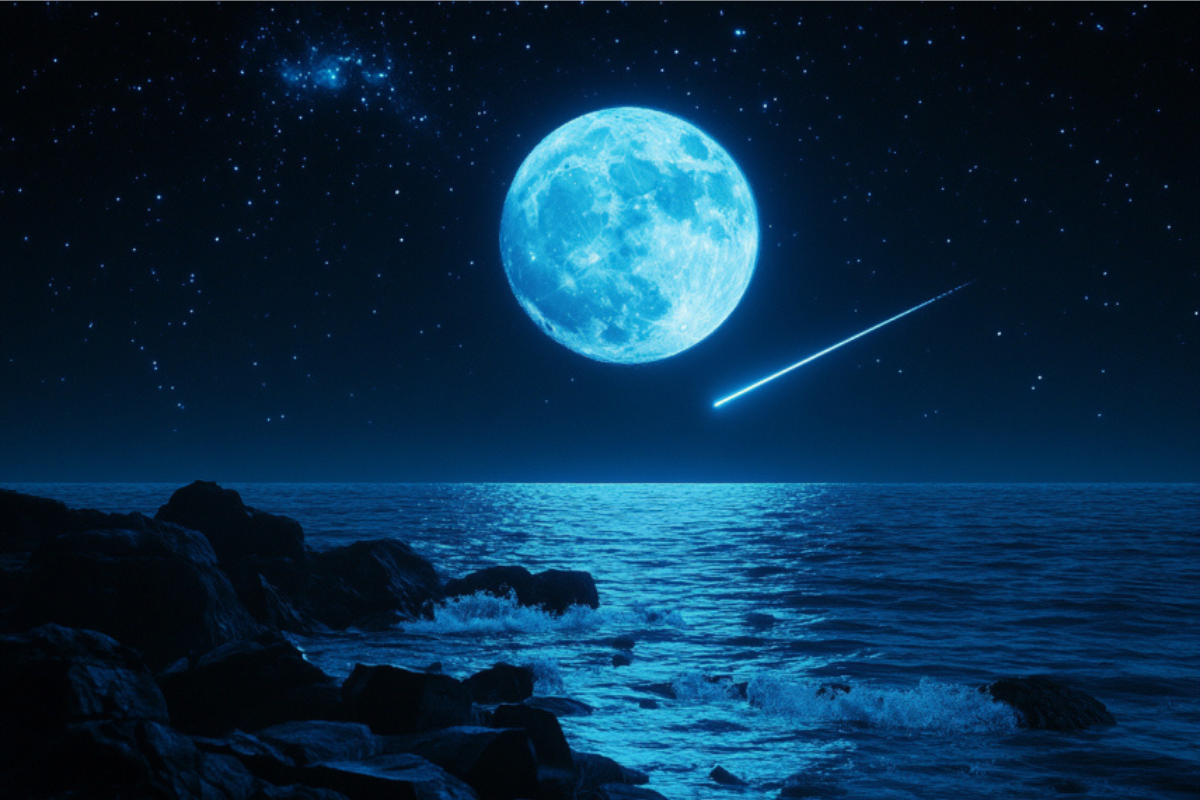
Blue Moons can affect tides and weather.
The gravitational pull of the Moon during a Blue Moon can cause more extreme tidal patterns resulting to higher high tides and lower low tides. This can affect coastal areas and marine ecosystems and shoreline dynamics.
Weather patterns can also be affected by Blue Moons.
Some studies say it can bring more intense storms, winds and precipitation.
While the mechanism is still being researched the correlation between Blue Moons and weather changes is an interesting area of study.
The gravitational effect of a Blue Moon can also reach ocean currents.
These changes can affect marine life, migration patterns and distribution of nutrients in the water. Knowing these effects can help scientists to better predict and manage marine ecosystems.
There’s also some evidence that Blue Moons can affect long term climate patterns like El Niño and La Niña.
More research is needed to fully understand these connections but the effect of Blue Moons on our planet’s climate is an interesting topic to explore.
Blue Moon significance
- Blue Moons have been used in music, literature and popular culture.
- The phrase “once in a blue Moon” is recorded from 1833 and means a rare or unusual event.
- Blue Moons have also been used to describe unusual or rare events in science and nature.
- Next Blue Moon is on [specific date] and it’s special because it’s the rare alignment of monthly and seasonal cycles. Be aware that these dates may vary depending on your time zone.
Conclusion
A Blue Moon is a rare and cool astronomical event that fascinates many.
Blue moons happen because of the mismatch between the lunar cycles and the calendar, 2 full moons in a month or a seasonal blue moon where only 1 full moon in a 19 year lunar cycle.
Whether you like the science behind Blue Moons or the folklore and cultural significance there’s something for everyone.
So mark your calendars for the next Blue Moon and get ready!
FAQs
Rarity, mystery and uniqueness.
Rare, magical or once in a lifetime moments.
It’s an uncommon occurrence of an extra full moon in a calendar month or season.
Blue moons occur during supermoon, something that happens very rarely.
It’s usually not literally called blue moon. The term means it’s rare.
Blue moon is either the 2nd full moon in a month or the second full moon in summer fall and winter full moon is the 3rd full moon in a season with 4. It’s rare because the lunar cycle doesn’t align with our calendar.
Blue Moon is a Belgian wheat beer.
It’s called a “blue moon” because it’s a rare event not because moon’s phases of the moon’s color.
Blue moon occurs every 2.5 years.





I’d perpetually want to be update on new posts on your site so I saved to my bookmarks! .